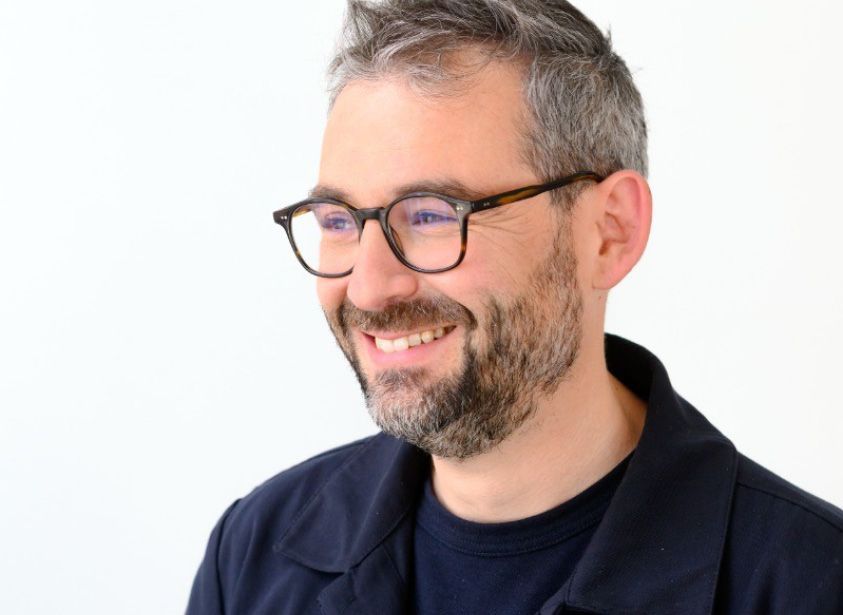Leonardo Giusti – it’s a new everything

Hosted in a talk at Domus Academy, Leonardo Giusti describes his innovative approach to integrating artificial intelligence into everyday life. His work explores AI as a design material and seamless interaction between humans and technology. Learn more below!

Leonardo Giusti is an award-winning designer, research Director, head of Design and Co-founder of Archetype AI. He is renowned for his approach to integrating artificial intelligence into everyday life.
His work has been featured in the New York Times, Washington Post, Wired, Fast Company, and other recognized magazines. It includes Project Soli and Archetype AI’s foundation model.
His vision focuses on creating scalable, intelligent technologies that seamlessly integrate into our lives, transforming how we interact with the digital world.

Giusti opens the talk by proposing the hypothesis that artificial intelligence (AI), when viewed as a design material, has the potential to unlock a new generation of everyday objects infused with intelligence and awareness. This idea builds on Mark Weiser’s 1996 vision of ubiquitous computing, where technology becomes so integrated into our lives that it disappears into the fabric of everyday life. However, contrary to the belief that ubiquitous computing makes technology invisible, the proliferation of devices has led to an “attention crisis,” where people are more distracted by technology than ever.
Leonardo Giusti’s experience allow him to suggest that the future of AI and design lies not just in creating smarter devices, but in developing technologies that can seamlessly integrate into our lives with greater awareness and understanding of human needs. According to him, AI could become a design material that enables these more considerate interactions, making intelligent technology more affordable and scalable.
Project Soli represents a groundbreaking advancement in sensor technology, developed to enable a novel interaction model that recognizes nonverbal human gestures. The core of Soli is a miniature radar sensor capable of detecting human motion at various scales, from minute finger movements to full-body actions. This innovative technology offers an ideal input method for computers embedded in everyday objects due to its low power consumption, ability to function through materials, and greater privacy compared to camera-based systems.
Through extensive experiments and studies, the team discovered that Soli could detect fine gestures, such as rubbing fingers together, and larger body movements, even at a distance. This capability led to the development of a new interaction model inspired by social interactions between people. The model introduces stages of interaction—aware, engaged, and active—allowing devices to recognize when a user is nearby, preparing to interact, or actively engaging with the device. This approach was first implemented in the Google Pixel 4, enabling intuitive gesture-based controls for common tasks like dismissing notifications or skipping songs.
Soli’s potential extends beyond mobile phones; by understanding subtle cues like head orientation and proximity, Soli-enabled devices can interact more naturally and respectfully with users, blending seamlessly into daily life. This technology has marked a significant step towards creating devices that intuitively understand and respond to human presence, paving the way for a future where technology interacts with us as naturally as we do with each other.
Approximately a year ago, together with a group of former Google employees, recognizing an opportunity in the rapidly advancing field of AI, Giusti founded a startup named Archetype AI. Motivated by the potential of the transformer architecture, they aimed to address scalability challenges in sensor-based technology, where developing custom machine learning solutions is often prohibitively expensive and complex. This team had previously encountered these issues firsthand, realizing the unsustainability of creating new machine learning models for each use case, even for a resource-rich company like Google, they conceived Archetype AI’s mission: to build a universal foundation model capable of interpreting sensor data across various applications without starting from scratch each time.
They envisioned this as a “GPT for the physical world,” enabling quicker scalability and innovation across multiple industries, from consumer electronics to industrial applications. Their flagship model, Newton, integrates sensor data with natural language to provide real-time insights, aiming to revolutionize how AI interacts with the physical environment.
If you want to hear these concepts explained by Leonardo Giusti himself, watch the video of his intervention at the “Design Probes” talk series, hosted by Domus Academy. Enjoy the video!





